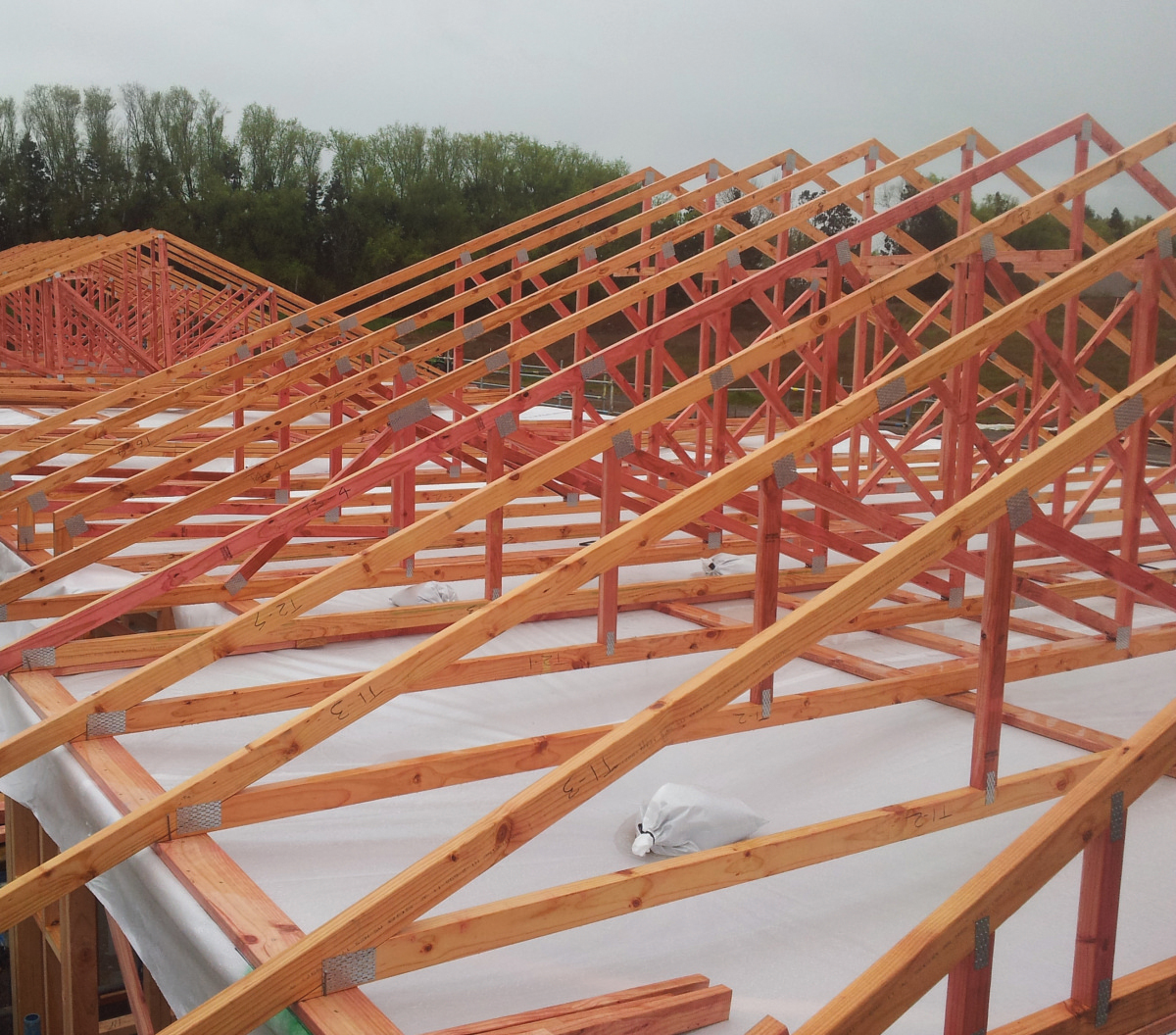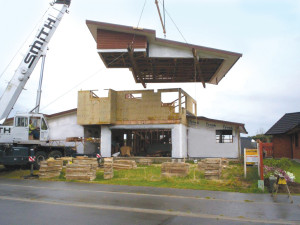Raising the roof
04 Oct 2013, Prove Your Know How, Safety

When installing roof trusses, sufficient fall protection will help ensure the job’s done with minimum risk.
When planning roof truss installation, it pays from a safety point of view to think about using the work at height three-point system – Eliminate, Isolate, Minimise – to manage the risk.
Elimination
While not commonplace in New Zealand, prefabrication on the ground allows completed sections, or even whole roofs, to be craned into place, thus greatly reducing the need for people to be working at height. This should be done whenever possible.
A safe working platform will be required around the perimeter of the building to fix the trusses into position on the wall plate.
At no time is any person to stand on or work from an external wall top plate without suitable fall protection.
Isolation
If prefabrication is not possible and trusses are assembled in situ, a safe working platform – such as a scaffold – should be provided around the perimeter of the roof.
Measures to prevent or mitigate the distance of a fall must also be provided internally. This can be achieved by providing a working platform or ‘crash deck’ immediately beneath the underside of the trusses.
Either conventional scaffolding, or, if appropriate, proprietary decking systems can be used for this. Safety mesh or other safety-rated products that can span across the top of the framing can also be used.
Minimisation
If a safe working platform cannot be provided, safety nets can be used if there is a safe clearance distance below the net and a suitable fixing point can be achieved.
Alternatives to nets are soft landing systems, such as bean bags or air bags. In some circumstances, a safe clearance distance can be achieved by locating bracing of the framing on the outside of the structure.
Providing nets or soft landing systems is also particularly important when installing temporary or permanent bracing, or before boarding out along the bottom chord of trusses, when access is required within the trusses. Any equipment used to gain access to higher levels of the truss should be properly designed and stable.
Working platforms can be supported by the truss members, if they are stable and capable of sustaining the load. Guard rails should be provided, unless truss members provide a similar standard of protection. Work below should be prohibited, unless workers are protected from falling materials.
” If prefabrication is not possible and trusses are assembled in situ, a safe working platform – such as a scaffold – should be provided around the perimeter of the roof
Systems such as nets or air bags and bean bags should only be relied on where a working platform to the standard described above is not feasible.
Where a working platform is used:
- Attachment points must be fit for purpose – check that the supporting structure is capable of resisting the expected anchorage loads.
- Seek advice from the manufacturer/installer.
- The risk of injury during the fall – eg striking rafters or blockwork – must be carefully assessed.
- Working platforms should be provided, where possible, in addition to the measures taken to arrest a fall.
More information:
You can find this information online at www.business.govt.nz/healthandsafetygroup/information-guidance/all-guidance-items/preventing-falls-from-height/the-safe-installation-of-roof-trusses
Pledge your commitment!
This year the Preventing Falls from Height project will be focusing on enlisting businesses to the Partners in Action Pledge. This is a public commitment to improve health and safety and help reduce the work toll. Pledge Partners will be kept in the loop about workplace health and safety activities via email and will be recognised on the Ministry’s website. Visit the Partners in Action Pledge page at www.dol.govt.nz/whss/pledge.asp for more information.
Register to earn LBP Points Sign in




